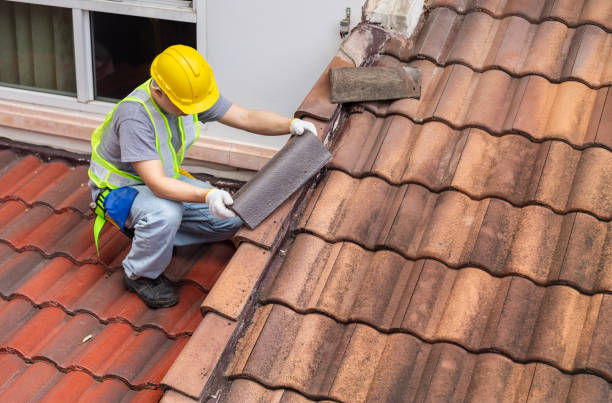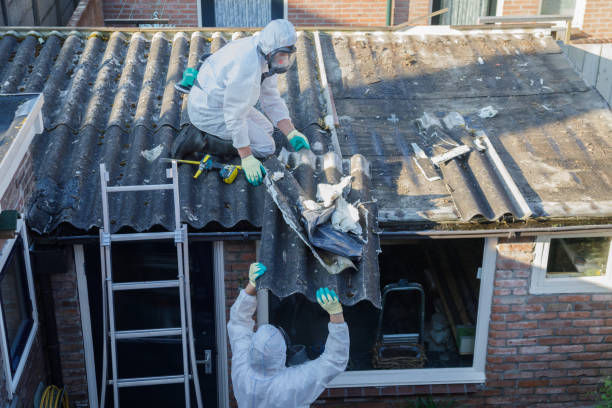How to Prepare Your Home for Roof Installation
- housespecialist
- Mar 17
- 5 min read
Roof installation is a critical home improvement project that significantly enhances the value, functionality, and aesthetic appeal of your property. However, the process can be complex and disruptive. Proper preparation is essential to ensure it goes smoothly and efficiently. This comprehensive guide will walk you through the steps necessary to prepare your home for roof installation, covering everything from initial planning to post-installation care.
Schedule a Pre-Installation Inspection
The first step in preparing your home for roof installation is scheduling a thorough pre-installation inspection. This assessment helps identify any underlying issues that could complicate the installation. Structural damage, water leaks, mold growth, and other problems should be addressed before the installation process begins. Trusted roof installation from Right Way Roofing ensures these issues are tackled early, so the installation proceeds without unexpected obstacles, saving you time and potential additional costs.

Clear the Attic and Top Floors
Roof installation involves significant debris and falling materials, which can damage the contents of your attic and top floors. To protect your belongings, it's essential to clear these areas before the roofing team arrives. Move or cover items such as furniture, electronics, and fragile objects. Temporarily relocating these items to a safe location within your home helps prevent accidental damage during the installation process. Additionally, covering floors with drop cloths can protect them from dust and debris.
Secure Outdoor Items
The exterior of your home will be affected during the roof installation. Securing outdoor items such as patio furniture, grills, garden tools, and decorations is crucial. Removing these items from the work area prevents them from being damaged by falling debris or getting in the way of the roofing crew. You may need to find temporary storage solutions for larger items to ensure they remain safe and out of the way during the installation.
Inform Your Neighbors
Roof installation can be noisy and potentially disruptive to your neighborhood. To maintain good relations with your neighbors, it's courteous to inform them about the upcoming project. Provide them with the installation schedule, including start and end dates. This communication allows them to prepare for the noise and any inconvenience. Most neighbors will appreciate being informed and may take necessary precautions to minimize disruptions to their daily routines.
Protect Landscaping
Your landscaping and garden can be vulnerable to damage during roof installation. Protecting plants, flowers, shrubs, and other landscaping features is essential. Covering them with tarps or plastic sheets helps prevent debris from falling directly onto them. Additionally, make sure your roofing contractor is aware of any delicate landscaping features. They can take extra care during the installation to minimize damage. If necessary, consider temporarily relocating valuable plants to a safer area to avoid accidental harm.
Prepare for Noise and Dust
Roof installation generates considerable noise and dust, which can permeate your home. Preparing for these disruptions is vital for your comfort and well-being. If you have pets, consider moving them to a quieter area or arranging for them to stay with friends or family during the installation. For sensitive family members, such as infants or elderly individuals, creating a quieter space within your home can help them stay comfortable. Sealing off the work area with plastic sheeting and closing windows can help minimize dust infiltration. Running air purifiers can also help maintain indoor air quality.

Ensure Accessibility
Roofers need easy access to your roof and surrounding areas to efficiently carry out the installation. To facilitate a smooth workflow, ensure that access points such as gates, driveways, and walkways are clear of obstacles. Move vehicles and any other items that might impede the roofing crew's access. Clear access allows the roofers to transport materials and equipment without any hindrance, helping to keep the project on schedule and reducing potential challenges.
Verify All Details with Your Contractor
Effective communication with your roofing contractor is key to a successful roof installation. Before the project begins, verify all details such as the start date, estimated timeline, project scope, and any specific concerns you may have. Discussing these details ensures that your expectations are met and that there are no misunderstandings. Regular updates from your contractor keep you informed about the progress and any potential changes to the plan. This transparency allows you to address any issues promptly and ensures a smooth installation process.
Prepare for Post-Installation Cleanup
Once the roof installation is complete, a thorough cleanup process will be necessary to remove debris and ensure your property is back in order. Discuss post-installation cleanup with your contractor ahead of time. Many roofing companies include cleanup as part of their service, but confirming the specifics beforehand is always a good idea. Inspect your property after the completion to ensure that all debris has been removed and no damage has occurred to sensitive areas like gardens or outdoor furniture. Solutions for foam roof delamination should also be addressed if relevant, ensuring your property is free from any potential issues. Proper cleanup helps you enjoy your new roof without the hassle of dealing with leftover mess.
Inspect the Finished Work
After the roof installation is complete, it's crucial to inspect the finished work to ensure it meets your expectations and is of high quality. Conduct a thorough inspection of the roof, checking for any signs of defects, improper installation, or areas that require touch-ups. If you're unsure about what to look for, consider asking your contractor to walk you through the inspection process. Address any concerns or issues you identify promptly with your contractor to ensure they are resolved before considering the project complete.
Update Homeowners Insurance
With a new roof installed, it's advisable to update your homeowners insurance policy. Inform your insurance provider about the new roof and provide any necessary documentation. Updating your policy can potentially lead to reduced premiums since a new roof enhances the overall safety and integrity of your home. Discussing the details with your insurance provider ensures that you're adequately covered and that any potential future claims related to the roof are addressed.
Monitor the Roof's Performance
In the weeks and months following the roof installation, monitor the roof's performance to ensure everything is functioning correctly. Keep an eye out for any signs of leaks, water damage, or unusual wear. Regular inspections, especially after severe weather events, help identify and address issues early before they become significant problems. Maintaining open communication with your contractor for any warranty-related questions or concerns is also advisable.
Conclusion
Proper preparation for roof installation not only simplifies the process but also helps protect your property and belongings. By following these steps, you can ensure that your home is ready for the exciting transformation. From scheduling pre-installation inspections to protecting landscaping, securing outdoor items, and ensuring accessibility, each step plays a crucial role in achieving a successful roof installation. Effective communication with your contractor and thoughtful planning contribute to a smooth and rewarding home improvement project. With careful preparation, you can look forward to enjoying the benefits of a new, high-quality roof that enhances the safety, functionality, and aesthetics of your home.



Comments